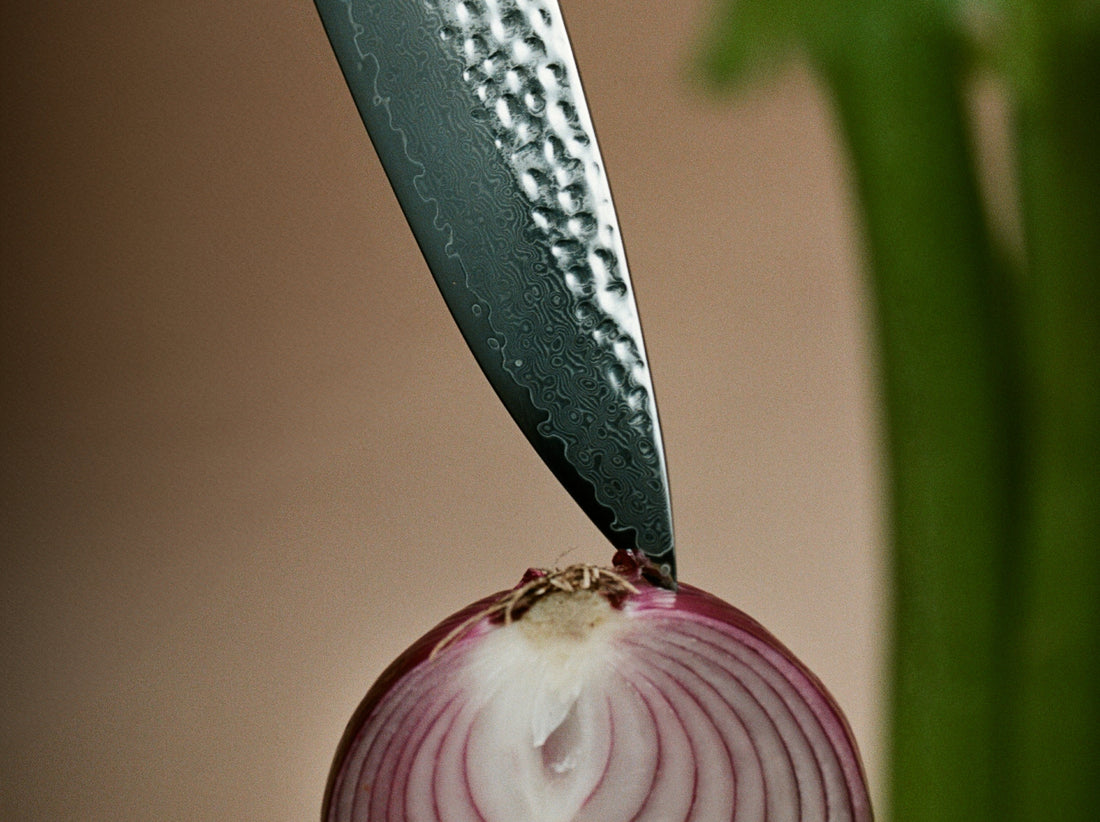
Chef’s Knife vs. Santoku vs. Nakiri: Which One Belongs in Your Kitchen?
Share
When shopping for a high-quality kitchen knife, you’ll quickly encounter three popular options: the chef’s knife, santoku knife, and nakiri knife. Each of these blades has unique characteristics and ideal uses. Choosing the right one matters because the knife you use can significantly impact your cooking efficiency, precision, and enjoyment. In this guide, we’ll break down the differences between a chef’s knife, a santoku, and a nakiri to help you decide which is the best kitchen knife for your needs.
Chef’s Knife: The Versatile Workhorse
The chef’s knife is the all-purpose workhorse of the kitchen. It features a broad, curved blade that tapers to a pointed tip, perfect for a rocking chopping motion. Typically 8 inches long, it’s built for versatility.
- Best for: Chopping vegetables, slicing meat, mincing herbs
- Blade shape: Curved edge, pointed tip
- Technique: Rocking motion and tip control
If you only have one knife in your kitchen, make it this one.
Santoku Knife: Precision Meets Speed
The santoku is a Japanese-style general-purpose knife. Shorter and lighter than a chef’s knife, it has a flat edge and a rounded-down tip (called a sheep’s foot).
- Best for: Thin slicing, dicing vegetables, cutting fish
- Blade shape: Flat edge with a rounded tip
- Technique: Push cutting
Its lightness and precision make it ideal for cooks who value speed and finesse.
Nakiri Knife: The Vegetable Specialist
The nakiri is a Japanese vegetable knife with a completely straight edge and squared-off tip. It’s designed to make clean, even cuts without rocking the blade.
- Best for: Chopping and slicing vegetables
- Blade shape: Rectangular, flat edge, no tip
- Technique: Straight up-and-down chopping
If you prep lots of vegetables, a nakiri will be your best friend.
Comparison Table
| Feature | Chef’s Knife | Santoku Knife | Nakiri Knife |
|---|---|---|---|
| Blade Length | ~8 inches | 5–7 inches | 6–7 inches |
| Blade Shape | Curved edge, pointed tip | Flat edge, rounded tip | Flat edge, squared tip |
| Cutting Motion | Rocking | Push cut | Straight down |
| Best For | All-purpose slicing, chopping, mincing | Precision slicing, boneless meats | Vegetable prep |
| Versatility | High | Moderate | Low (specialized) |
How to Choose the Best Knife for Your Cooking Style
- Pick a Chef’s Knife if you want one do-it-all blade for everyday cooking. Ideal for beginners, gift shoppers, and home cooks who prepare a variety of meals.
- Choose a Santoku if you prefer a lighter, shorter knife that excels in precise vegetable and protein prep.
- Opt for a Nakiri if you’re a plant-forward cook who spends a lot of time chopping produce.
Bringing It All Together
Each of these knives has a place in the kitchen, but if you’re starting with just one, a chef’s knife offers the most flexibility. It can handle almost every task with confidence, making it the best kitchen knife to invest in first.
At SEKKIN, we designed our chef’s knife to combine precision, balance, and everyday versatility. Whether you’re upgrading your own tools or shopping for someone who loves to cook, our Essence Chef’s Knife is a timeless choice that feels just right in your hand—and in your kitchen.
